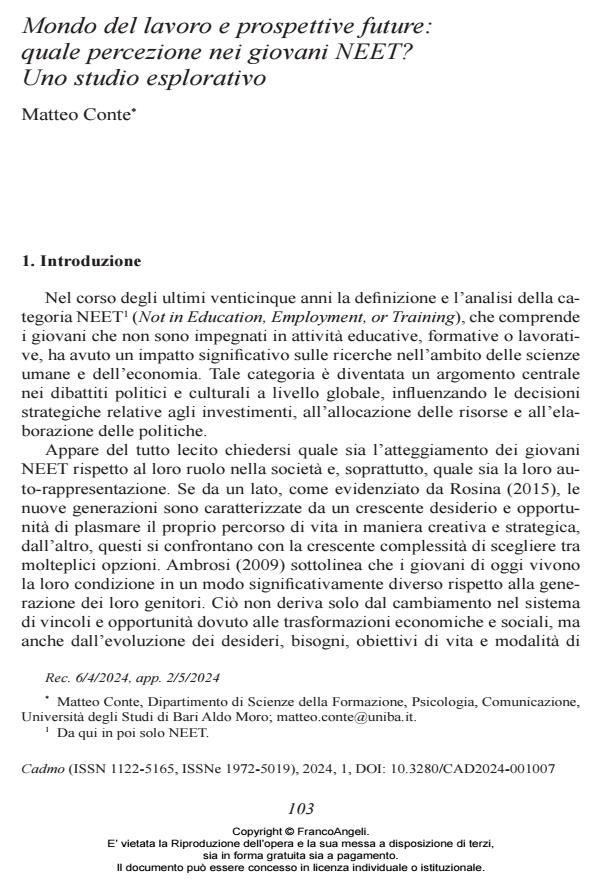World of work and future prospects: what perception in young NEETs? An exploratory study
Journal title CADMO
Author/s Matteo Conte
Publishing Year 2024 Issue 2024/1
Language Italian Pages 23 P. 103-125 File size 244 KB
DOI 10.3280/CAD2024-001007
DOI is like a bar code for intellectual property: to have more infomation
click here
Below, you can see the article first page
If you want to buy this article in PDF format, you can do it, following the instructions to buy download credits

FrancoAngeli is member of Publishers International Linking Association, Inc (PILA), a not-for-profit association which run the CrossRef service enabling links to and from online scholarly content.
This study aims to explore the impact of achieved education level and different positions in relation to the labor market on the self-representation processes among a sample of young NEETs (Not in Education, Employment, or Training) residing in the Puglia region. The core of the study revolves around distinguishing between the self-perceptions of proactively job-seeking young NEETs and those classified as inactive, aiming to outline the moderating effect of education on such perceptions and on the expectations of integration into the labor market and society. The contribution calls for a critical reflection on the modes of support and the interventions proposed, advocating for an intervention paradigm that enhances the empowerment of individual potentials and skills beyond merely compensating for possible deficiencies. This reflection extends to all educational agencies, which are called to collaborate by recognizing the multifaceted nature of the NEET category, promoting paths capable of valuing the diversity of experiences and expectations of these youths.
Keywords: NEET, employability, hope, youth, future
Matteo Conte, Mondo del lavoro e prospettive future: quale percezione nei giovani NEET? Uno studio esplorativo in "CADMO" 1/2024, pp 103-125, DOI: 10.3280/CAD2024-001007